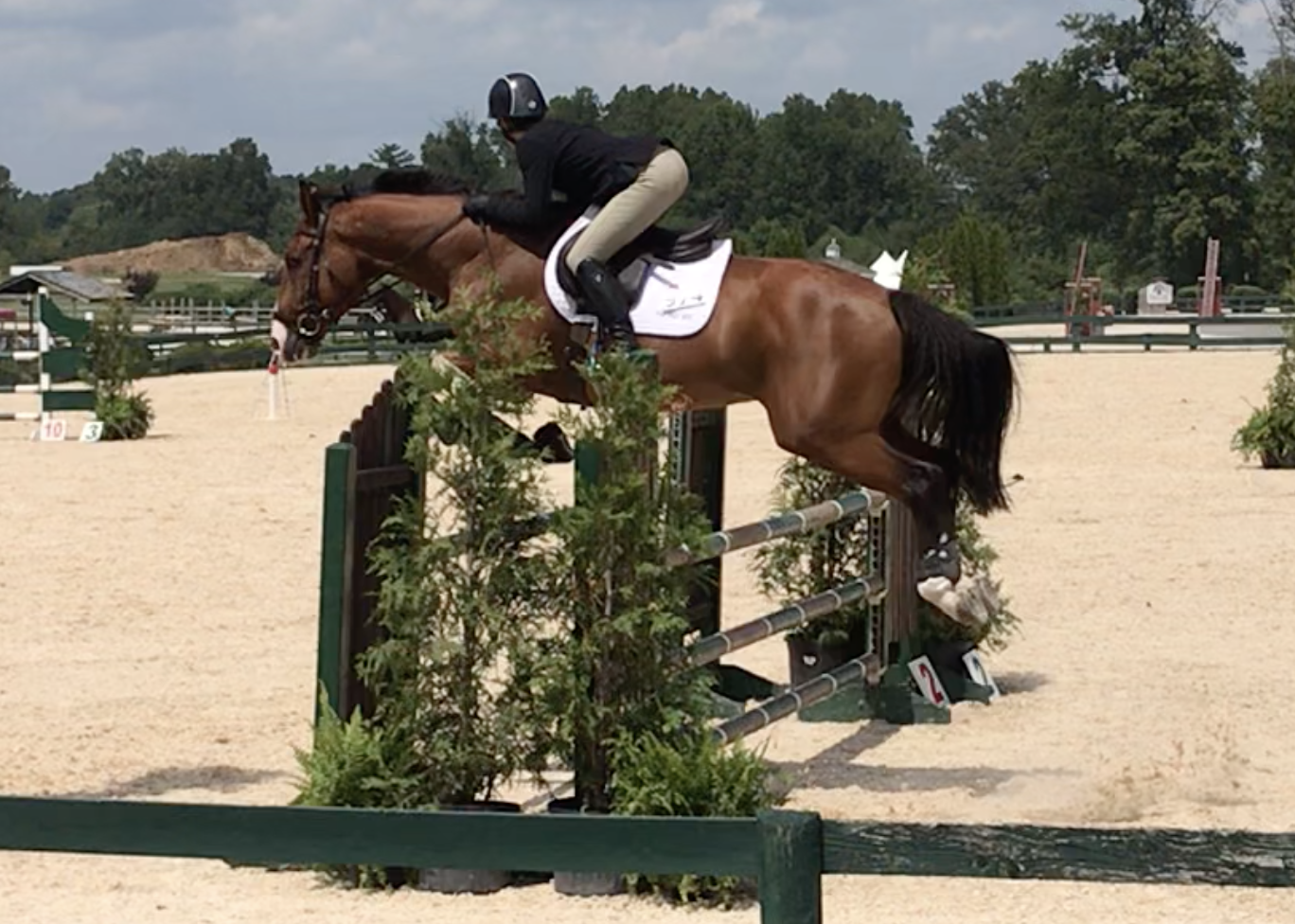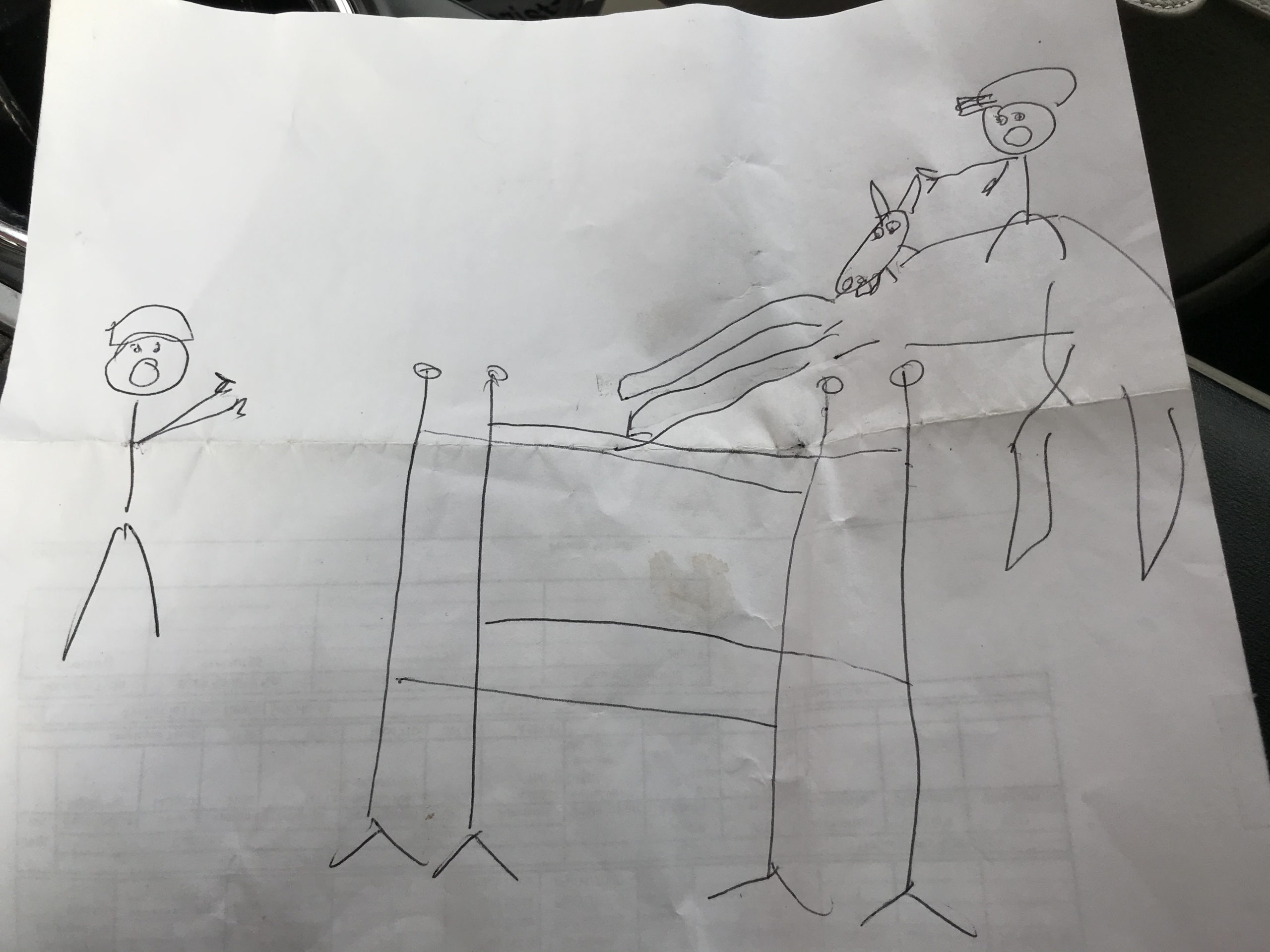 Susan Glover competing her horse Steve. Photo by Jaime Loichinger.
Susan Glover competing her horse Steve. Photo by Jaime Loichinger.
There have been a lot of issues raised recently in the hunter-jumper world over horse showing, amateur rules, and governance in general. Most of those competing in H/J are working ammies, and most of us appear to feel left out of the decisions made by governing bodies like the USHJA and USEF.
The issues under debate are all interlinked, but if one telescopes out the main variables are lack of ammy representation at the top, new or existing rules which increase the already high cost of showing, and disagreements or confusion over what constitutes an amateur in the first place. As this is such a complex set of topics, here I am going to focus only on the problem of ammy vs. pro and what it means (or should mean) for H/J competitions. To start I went to the 2021 USEF Rulebook for answers, and found this nice little set of principles called The Sportsman’s Charter.
Here it is in its entirety:
THE SPORTSMAN’S CHARTER
“That sport is something done for the fun of doing it and that it ceases to be sport when it becomes a business only, something done for what there is in it;
That amateurism is something of the heart and spirit – not a matter of exact technical qualifications;
That good manners of sport are fundamentally important;
That the code must be strictly upheld;
That the whole structure of sport is not only preserved from the absurdity of undue importance, but is justified by a kind of romance which animates it, and by the positive virtues of courage, patience, good temper, and unselfishness which are demanded by the code;
That the exploitation of sport for profit alone kills the spirit and retains only the husk and semblance of the thing;
That the qualities of frankness, courage, and sincerity which mark the good sportsman in private life shall mark the discussions of his interests at a competition.”
Doesn’t this sound nice? Some takeaways: An ammy is more of a feeling than a strict category. No one should do this for money over fun. The sport shouldn’t be seen as all-important, but people should still take it seriously and bring good manners to it. Uh-oh. Going through the Charter it looks like only the “husk and semblance” of the sport survive in H/J-land!
The problem is that because horse shows are divided into categories for pros, ammies, and juniors as riders then we actually need a really clear definition for these categories. It doesn’t particularly matter if I feel like a (rank, hah hah) amateur in my heart and soul; if I don’t meet the official definition then I’m not qualified to show in that category of classes. I can picture it now: “But, Ms. Show Steward, ma’am, I FEEL like an amateur! I feel it here!” (cried out while thumping my chest as the Steward rolls her eyes).
If I’m a pro and putting profit over the sport, does that make me an unsportsmanlike monster or just someone trying to make a living in the hard world of what my students like to call “end-stage capitalism”?
I know the Charter isn’t meant to provide more than a happy little preface to the rulebook, but if our sport the way it currently operates is the exact opposite of the basic principles said to animate it, I think we are in trouble. Going further into the 2021 rules (Sub-Chapter 13-B, starting on p. 149) provides some clarity for the amateur definition problem, luckily. Although, I would like to point out that this thing needs some editing. However, the basic idea is that if you ride or train AND you or a member of your family or your whole entire family accepts remuneration in cash or gifts worth more than $300 a year for any of your riding and training activities, you are not an amateur.
There are lots of qualifiers in the rules, but that is the gist. Looks pretty straightforward, so what is the perpetual axe that so many ammies seem to grind? To get to that, a good question to ask is why we care about whether someone is an ammy or a pro? Is it about who we compete against? A quick survey of what people say about this in the H/J world is that the ammy and pro categories are to protect amateurs from competing against people who ride for a living and are (presumably) more skilled than your average working ammy; it’s a way of providing two different playing fields.
In eventing, however, ammies and pros can and do compete against each other and everyone survives. An event might offer three different categories for the same level (up through Preliminary, and after that there are other qualifiers to meet): Open, which is open to anyone but is often the reserve category for pros; Rider, which is for anyone who hasn’t completed an event above the next highest level in the last five years; and Horse, which is open to any rider, but here the horse cannot have completed an event above the next highest level in the last five years.
In plain terms, what this does is provide a category appropriate for the current record of each horse and rider. If I regularly ride my top horse in Advanced and want to enter my new young horse in Novice I’m going to be put into the Open or the Horse category as my own record puts me out of the Rider category. If I haven’t done above Novice myself but the horse I’m competing on is an FEI schoolmaster I will be put in the Rider category. This is regardless of whether or not I’m an ammy or a pro, although the way this generally works is that most of those in the Open and Horse categories, especially as the levels go up, will be pros and the Rider category is where you will find the less experienced ammies. The juniors, of course, have their own categories.
Why couldn’t we do this in H/J-land? One of the biggest gripes about the ammy classification is that within that category there are riders who own or have the ride on multiple horses. I ride in the AA and AO Jumpers and often compete against people with a string of horses, including those stepping down from the GP ring or having campaigned extensively with a pro. That’s fine, those people are lucky! My dream is to have a second jumper and I begrudge those who have two or more of them nothing. But: if the whole point of separating us from the pros is to provide a more even playing field within our own little category, well…me and my one horse get into the ring a heck of a lot less frequently than another ammy who has multiple mounts with years more experience in the bigger levels. Therefore, the ammy category IS weeding out those who make a living from riding, but the playing field is hardly level from within our ammy category.
Some would (and do) argue that this money-based qualifier is enough, but the question remains: why does eventing do it differently than H/J? Why don’t we have qualifiers based on our own AND our horses’ records? Yes, at a rated show one cannot compete the same horse in both the High AOs and the Low AAs, but that pertains just to that horse and just that particular show. There are other qualifiers: you can’t be going around competing in World Cups, or FEI classes in general, or doing Grand Prix offering $25,000 or more and still go in the ammy classes. So, that cuts out about three people.
 Susan’s rendition of her having an “ammy moment” pushing for a rather long spot.
Susan’s rendition of her having an “ammy moment” pushing for a rather long spot.
Since I bought him as a rising five year-old, my horse Steve has been shown by only me, for better or for worse. That means that we have essentially the same record. If the jumper classes were divided into Horse, Rider, and Open categories instead of the basic ammy and Open then we would be in the section with other horses and riders who have similar experience; probably Rider given our record. If Steve had been previously doing the big money classes with someone else but I was doing the Low AOs we’d be in the Rider section. If we were both competing at higher heights but needed to go back down a couple of levels for whatever reason, we would be in the Open section. If I was competing at upper levels with other horses but my young horse was not, we would be in the Horse section.
I’ve already suggested that we have ride times; I recognize that this seems as likely as merit-based categorization at H/J shows! There are a lot of extra problems with doing eventing-style categories, such as the week-long model of H/J shows where the pros ride in the beginning of the week and the (working) ammies on the weekend. I understand that it would require an immense amount of restructuring for the big rated shows.
On the other hand, given how rancorous this topic is, it certainly bears further discussion. There are, as I said at the beginning, many related issues. Would this new classification system make showing any cheaper? I have no idea, but it would definitely mean that those within my own category have the same basic experience as I do, in terms of at what level we routinely compete. It wouldn’t do much about people who stay in the same level year after year and have multiple horses doing only that one level (which is actually fine with me), but in any given section it would divide those who are successfully (i.e. getting around), jumping at higher levels from those who are not.
I don’t know if this is a good answer to this part of the ammy problem, but, again, it’s a discussion that is going on amongst ammies on social media, at shows, in the barn. As such, it bears much more debate. And, it has relevance to the larger questions of how we make showing more accessible, the sport more representative, and our particular playing fields fairer. What do you think? Why do we have the ammy category, and what is it supposed to do? What SHOULD it do? Let’s debate!
